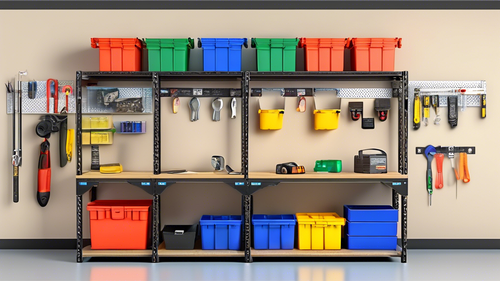
Mastering Mind Maps: Unleash Your Organizational Genius
Share
You're about to unleash the full potential of mind maps, a powerful tool that will revolutionize the way you organize your thoughts, tackle complex projects, and achieve your goals with unprecedented clarity and precision. By embracing effective mind map strategies, you'll structure your thoughts, capture ideas non-linearly, and excel in getting things done. To create mind maps effectively, identify a central idea, keep it simple, and start with a clear goal. By mastering mind maps, you'll unleash diverse applications, harness advanced techniques, and visually represent your goals. Now, take the next step to elevate your organizational genius.
Key Takeaways
• Master advanced mind map techniques to revolutionize thought organization and tackle complex projects with precision.
• Create a knowledge base and outline books or articles to enhance visualization of goals and objectives.
• Collaborate with others effectively in real-time to elevate mind mapping skills and achieve shared goals.
• Structure thoughts effectively using non-linear capturing of ideas to overcome hindrances and unlock mind map benefits.
• Embrace effective mind map strategies to excel in getting things done and unleash diverse applications.
Unlocking Mind Map Benefits
What's hindering you from tapping into the full potential of mind maps, and how can you start utilizing their organizational power?
By embracing effective mind map strategies, you can access the benefits of this powerful tool.
Mind maps help you structure your thoughts effectively, allowing for non-linear capturing of ideas and breaking through mental roadblocks. They're a great tool for Getting Things Done (GTD) method followers and can be used for personal and business projects.
With mind maps, you can collaborate and capture ideas in groups, brainstorm, and generate ideas. By leveraging these advantages, you'll be able to tackle complex projects with ease and precision.
Creating Mind Maps Effectively
To create a mind map that truly captures your ideas, start by identifying a central idea or concept that serves as the anchor for your entire map. This will help you stay focused and guarantee your map remains organized.
As a beginner, it's crucial to keep your mind map simple and concise. Here are some strategies to get you started:
- Start with a clear goal or objective
- Use keywords and phrases to trigger ideas
- Experiment with different mind map techniques, such as visual brainstorming and creative mapping
- Don't be afraid to add colors, shapes, and images to make your map more engaging
- Practice, practice, practice - the more you create mind maps, the more comfortable you'll become with the process
Maximizing Mind Map Uses
You can harness the full potential of mind maps by exploring their diverse applications, from organizing projects and study materials to facilitating collaborative brainstorming sessions.
By leveraging advanced techniques, you can elevate your mind mapping skills to the next level. For instance, you can use mind maps to create a knowledge base, outline books or articles, or even plan events.
Additionally, collaborative applications allow you to work with others in real-time, making it easier to brainstorm and generate ideas. With mind maps, you can also create a visual representation of your goals and objectives, making it easier to stay focused and motivated.
Frequently Asked Questions
How Do I Avoid Cluttering My Mind Map With Too Much Information?
To avoid cluttering your mind map, you'll prioritize a clear visual hierarchy and implement information filtering by focusing on key concepts, using concise labels, and grouping related ideas together, ensuring a clean and organized visual representation.
Can I Use Mind Maps for Tasks That Require a Lot of Data Analysis?
Imagine exploring a dense forest of data, where trees of numbers and statistics loom large. You can use mind maps to tame this beast, visualizing complex data sets and uncovering statistical insights, making it easier to analyze and make informed decisions.
Are Mind Maps Effective for People With Dyslexia or Other Learning Disabilities?
You'll find mind maps incredibly effective for people with dyslexia or learning disabilities, as they tap into dyslexic strengths like creative thinking and visual learning, providing a powerful tool for organization and idea generation.
How Do I Ensure My Mind Map Remains Flexible and Adaptable to Changes?
To keep your mind map flexible, you'll want to focus on mindful evolution, allowing your ideas to evolve naturally. Use dynamic branching to reorganize and refine your thoughts, ensuring your map adapts to changes as you go.
Can I Use Mind Maps in Combination With Other Productivity Systems?
You're the master conductor, orchestrating your productivity systems like a symphony. Yes, you can harmoniously combine mind maps with other systems, leveraging digital integration and tool synergy to amplify your organizational genius.
Conclusion
You've finally mastered the art of mind mapping, and your organizational genius is now harnessed upon the world. Your friends and family will marvel at your newfound productivity, and your to-do lists will tremble with fear.
But let's be real, you'll probably just use your newfound powers to organize your Netflix binge-watching schedule or color-code your sock drawer. Either way, pat yourself on the back – you've earned it.
Related Posts
-

Garage Storage Rack Safety
Garage Storage Rack Safety: A Guide to Safe Practices As a passionate advocate for garage safety, nothing brings m...
-

What Makes an Efficient Walk-In Closet System?
You create an efficient walk-in closet system by combining customizable shelves and storage that cater to your unique...
-

7 Creative Corner Cabinet Storage Solutions
You're looking to reveal the full potential of your corner cabinets, and you're not alone - maximizing storage in the...


